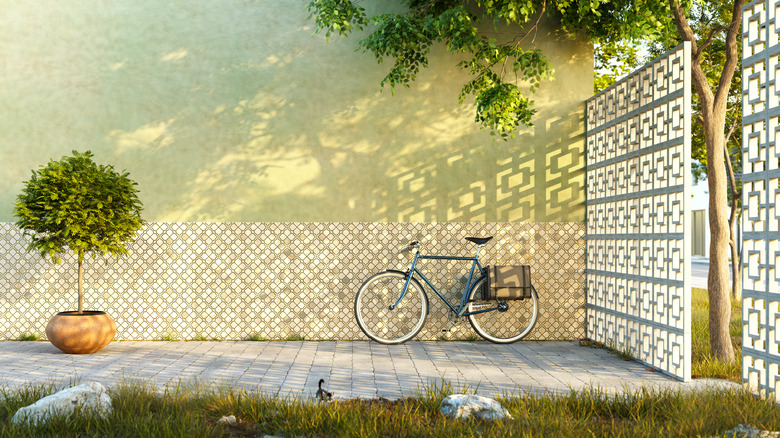Breeze Blocks: What They Are And How They Can Upgrade Your Outdoor Space
Breeze blocks, an architectural hallmark of the mid-20th century, have experienced a remarkable resurgence in modern design, offering an ideal upgrade for your outdoor space. Known for their distinctive geometric patterns and lightweight design, breeze blocks have become a symbol of the fusion between functionality and aesthetics.
From a functionality standpoint, the primary purpose of these blocks is to facilitate airflow while acting as a screen offering sun protection, privacy, and thermal insulation. Made from a blend of cement, sand, and water, breeze blocks are molded into various patterns. These patterns, often repetitive, can be simple geometric shapes, as seen at The Lantern in Hanoi, Vietnam, or used for more elaborate artistic motifs like sculptures. They can be solid, hollow, patterned, or colored, leaving them open to several design possibilities. These aspects seamlessly lead us into their historical context when they were first fully appreciated.
The history of breeze blocks reveals much about their rise, fall, and resurgence in popularity. With roots tracing back to Asian design inspirations, their introduction in America dates to the 1930s. It was not until the post-war economic boom that breeze blocks gained widespread popularity. This surge in demand was attributed mainly to their affordability, making them a favored choice in the burgeoning construction of that era. Particularly in the 1950s and 1960s, in warmer regions like Florida and California, breeze blocks were a staple of mid-century modern architecture until trends shifted and their use declined, leading to a period where they were seen as outdated.
Transforming outdoor spaces with functionality and aesthetics
However, today, breeze blocks are driven by a nostalgic revival of mid-century aesthetics and an emphasis on sustainable design practices. This revival has opened new avenues for their use in modern outdoor spaces. They excel as elegant screens and partitions, creating a balance between open, airy spaces and private, secluded zones in gardens and patios. This blend of openness and privacy is not just practical but also aesthetically pleasing, showcasing the blocks' versatility in outdoor design.
In addition to their practical uses, breeze blocks offer an artistic flair to any outdoor setting. The variety of available designs allows homeowners to add a personal touch, be it retro or contemporary, to their outdoor spaces. This artistic potential complements their practicality, as these blocks are also ideal for constructing robust, weather-resistant structures like carports and garden walls. Thus, their functional and aesthetic qualities go hand in hand, enhancing their appeal.
In the context of environmental sustainability, breeze blocks stand out for their natural cooling capabilities. By facilitating air circulation, they reduce the need for artificial cooling methods, leading to energy savings and environmental benefits. This eco-friendly aspect is particularly relevant in today's world, underscoring the blocks' alignment with sustainable design principles.
The adaptability of breeze blocks extends into the realm of landscaping. Their use in gardens for creating unique features like raised beds, benches, or water elements showcases their flexibility and the innovative ways they can be incorporated into the natural environment.
Breeze blocks in the real world and how to implement your own
Breeze blocks have been used in some of the most stunning architectural projects around the world, showcasing their versatility and aesthetic appeal. One truly exceptional example is the Parker Palm Springs in Palm Springs, California. Designed by Jonathan Adler, the five-star hotel is a quintessential example of mid-century modern design, where breeze blocks play a pivotal role. The iconic breeze block wall at the entrance is a structural element and a statement piece that captures the essence of Palm Springs' architectural heritage. Real-world examples like these might inspire you to upgrade your space and bask in the glory of breeze blocks.
While they do offer numerous advantages, their installation and maintenance require some attention. In this case, unfortunately, DIY is not exactly possible. Professional installation from a structural engineer, mason, or general contractor is highly recommended to meet the rules and regulations of your municipality. But what you can do is select the breeze block you like from suppliers like Tesselle and Clay Imports and start creating your vision! In terms of upkeep, the blocks are relatively low maintenance due to their porous nature, needing only regular cleaning to preserve their appearance.
With their rich history and practical, versatile nature, breeze blocks are more than just an architectural element with fluctuating popularity. They are "form meets function," redefining the aesthetics and utility of our living areas and proving that good design is indeed timeless.


